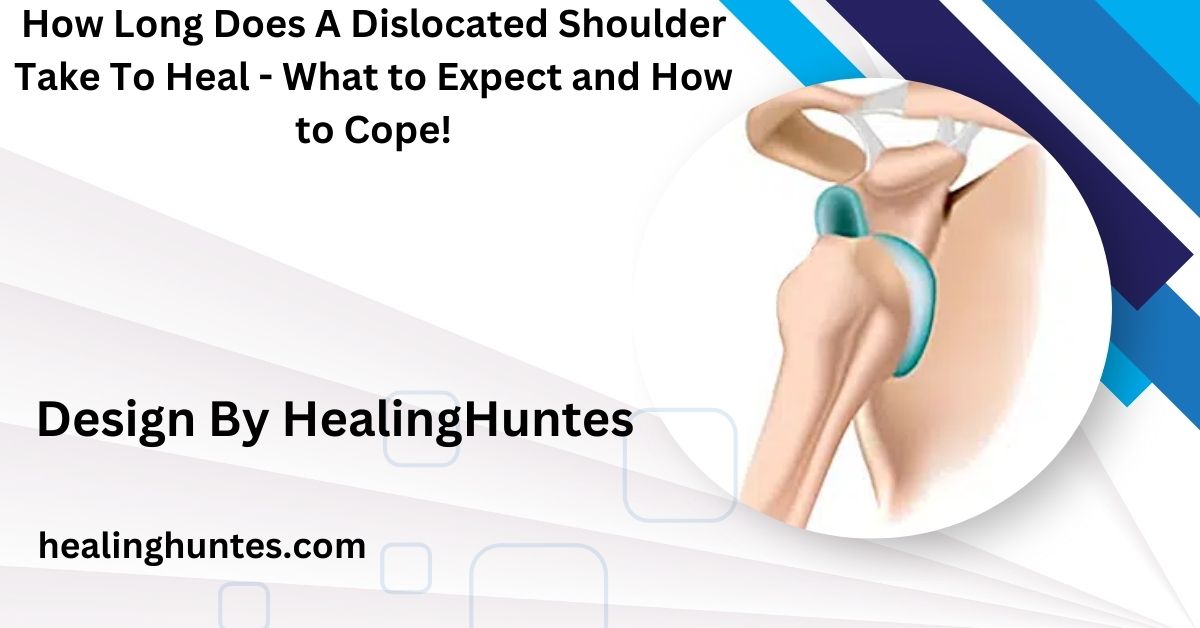How Long Does A Dislocated Shoulder Take To Heal – What to Expect and How to Cope!
A dislocated shoulder generally takes 6 weeks to 3 months to heal, depending on severity and adherence to treatment.
This guide will walk you through what to expect during the healing process, the factors that influence recovery time, and ways to speed up healing. Read on for a comprehensive overview and practical advice on shoulder dislocation recovery.
Understanding Shoulder Dislocation:

Shoulder dislocations occur when the upper arm bone slips out of the shoulder blade socket. It’s often caused by sudden impact, falls, or sports-related injuries. Because the shoulder joint is so flexible, it’s highly susceptible to dislocations, which can be painful and limit arm movement.
Initial Recovery Time for a Dislocated Shoulder:
For most people, the initial recovery time for a dislocated shoulder ranges from 2 to 4 weeks. During this period, the focus is on reducing pain and inflammation through rest, ice, and pain relievers. While it might seem like a short recovery window, it’s crucial not to rush this phase to avoid re-injury.
Factors Affecting the Healing Process:
Several factors can impact how quickly a dislocated shoulder heals:
Age:
Younger individuals generally heal faster due to better tissue regeneration and flexibility. In contrast, older adults may experience slower recovery due to natural aging processes and decreased muscle strength.
Also Read: Can A Hernia Heal On Its Own – Can Hernias Heal Naturally!
Severity of Injury:
The severity of a dislocation affects healing time, with more severe cases often involving ligament tears or fractures. Such complications usually require extended recovery periods and closer medical supervision.
Treatment Choice:
The treatment method—whether surgery, physical therapy, or self-care—significantly impacts recovery speed. Surgery often requires the longest recovery time, while less invasive treatments may lead to quicker, yet gradual, improvements.
Each individual’s recovery is unique, and combining medical treatment with proper self-care often yields the best results.
Timeline for Full Recovery from a Dislocated Shoulder:

Full recovery may take anywhere from 6 weeks to several months, depending on the injury and treatment plan. Here’s a general timeline for different phases of recovery:
- 2-4 Weeks: Initial recovery, with pain management and limited movement.
- 4-6 Weeks: Begin physical therapy to strengthen muscles and restore range of motion.
- 6 Weeks-3 Months: Gradual return to normal activities, with physical therapy focused on mobility.
It’s essential to follow your doctor’s guidelines throughout this process to avoid complications.
Role of Physical Therapy in Healing a Dislocated Shoulder:
Physical therapy is often recommended for a dislocated shoulder to regain strength and flexibility. Therapists guide you through exercises tailored to improve joint stability, which can prevent future dislocations. Starting therapy as soon as possible is beneficial to maintain shoulder mobility and speed up recovery.
Surgical Intervention and Extended Recovery:
If the dislocation is severe or reoccurs, surgery might be necessary. In such cases, recovery can extend from 3 to 6 months due to additional healing required for the surgical procedure. Surgical interventions stabilize the shoulder but require diligent physical therapy and careful monitoring post-surgery.
Also Read: How Long Does An Acl Take To Heal Without Surgery – A Complete Guide!
Home Care Tips for Faster Healing:
Home care can accelerate healing if practiced consistently:
Ice Therapy:
Applying ice to the affected shoulder helps reduce pain and swelling, especially during the first 48 hours after injury. Regular icing for short periods can provide ongoing relief and reduce inflammation.
Rest:
Resting the shoulder is essential to prevent further strain and promote healing. Avoid activities that put pressure on the shoulder, as overuse can worsen the injury and prolong recovery.
Pain Relief:
Over-the-counter pain medications, with a doctor’s approval, can help manage discomfort. These medications reduce pain levels, allowing you to focus on recovery without constant soreness.
Adhering to these tips is crucial for faster recovery and reduces the risk of re-injury.
Preventing Future Shoulder Dislocations:
Preventing future dislocations is crucial once you’ve experienced one. Here are some tips:
- Strengthening Exercises: Regular exercises focusing on shoulder stability help keep the joint secure.
- Avoid High-Risk Activities: Especially during the initial recovery phase, avoid activities that might lead to falls or heavy impacts.
A combination of strength and stability training goes a long way in preventing future injuries.
Complications and Warning Signs to Watch For:

Be aware of the following signs that may indicate complications:
Persistent Pain:
If the pain doesn’t subside within the expected recovery period, consult your doctor. Persistent pain could indicate complications or incomplete healing that requires further evaluation.
Swelling or Stiffness:
Excessive swelling or stiffness may signal underlying issues, such as ligament or tendon damage. Promptly addressing these symptoms with a healthcare professional is essential to prevent further complications.
Limited Mobility:
If shoulder movement remains restricted beyond the typical recovery time, seek a medical examination. Limited mobility can be a sign of lingering joint instability or improper healing.
Timely intervention can prevent these issues from escalating and support your recovery journey.
How Long Does It Take to Resume Normal Activities:
Resuming normal activities like driving or returning to work often takes about 4-6 weeks if recovery progresses well. Physical activities or sports may require longer, typically 3 months or more. It’s best to consult with your physician to determine when to safely resume these activities.
Also Read: Can A Abdominal Hernia Heal On Its Iown – Hernia Healing Myths!
Key Takeaways for Recovering from a Dislocated Shoulder:
Recovery from a dislocated shoulder involves:
- Patience: Healing takes time, especially for severe injuries.
- Consistency: Follow a treatment plan and physical therapy for optimal results.
- Prevention: Build shoulder stability to avoid future dislocations.
Staying mindful of these elements will help make your recovery smoother and more successful.
FAQ’s
1. Can a dislocated shoulder heal on its own?
A dislocated shoulder needs medical intervention to realign the joint, and it won’t fully heal without proper care and rest.
2. How can I speed up recovery?
Rest, physical therapy, and avoiding strenuous activities can speed up recovery. Ice therapy and pain management also support the healing process.
3. Will I regain full movement after a shoulder dislocation?
Most people regain full range of motion with proper treatment and physical therapy. Severe cases may need extended rehabilitation.
4. Is surgery always required for a dislocated shoulder?
No, surgery is usually recommended only for severe or recurrent dislocations. Most cases heal with rest, physical therapy, or immobilization.
5. How long should I avoid physical activity after a shoulder dislocation?
Generally, you should avoid physical activities for at least 6 weeks. Gradually return to normal activities with guidance from a medical professional.
Conclusion
Recovering from a dislocated shoulder requires patience, consistency, and careful adherence to a treatment plan. While the initial recovery may take just a few weeks, full healing often spans several months, especially if physical therapy or surgery is involved. By following medical advice, engaging in targeted exercises, and gradually returning to activities, most individuals can regain full shoulder function and prevent future dislocations.






